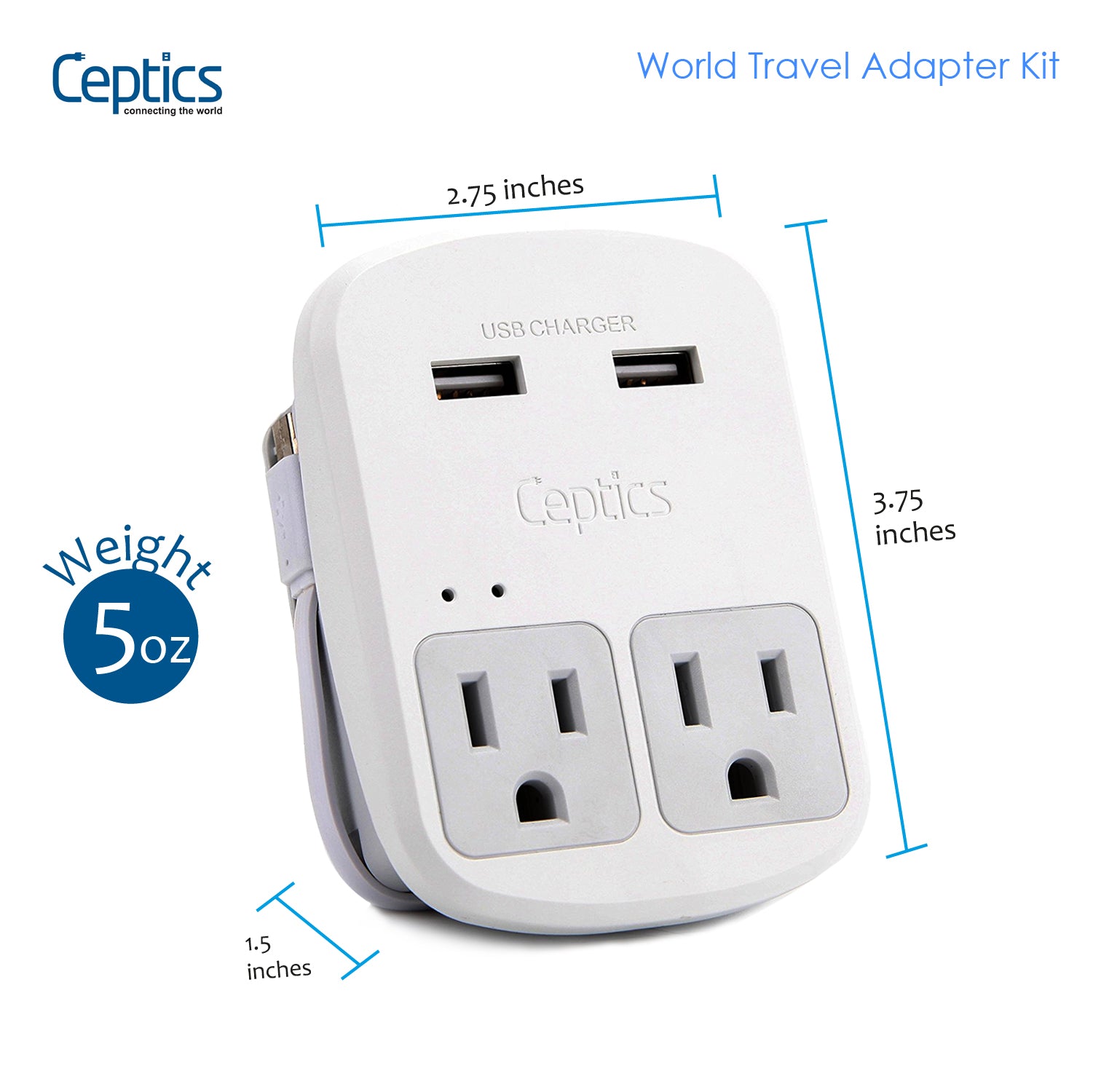Traveling internationally often comes with one small but frustrating surprise. Your devices don’t fit the outlets, or worse, they refuse to turn on. Many travelers pack the wrong gear, assuming a single universal travel adapter can handle any situation.
The truth is, there’s more to powering your devices abroad than just matching plug shapes. Knowing when to use a plug adapter and when a voltage converter is required can mean the difference between a smooth trip and a burnt-out charger.
What Is a Plug Adapter?
A plug adapter is a small, simple device that allows your plug to fit into a foreign outlet. It doesn’t convert voltage. It just makes the shape of your plug compatible with another country’s socket. Each region has its own electrical plug types and power plug types. For example, the United States uses Type A and B plugs, while most of Europe uses Type C, also known as the EU plug adapter. Australia, the UK, and Japan all have their own standards too.
A travel charger adapter is especially handy when you’re hopping between countries with different plug designs. It’s the lightweight, low-cost solution that keeps your everyday gadgets powered wherever you go.

What Is a Voltage Converter?
While a plug adapter deals with shape, a voltage converter deals with electricity. A voltage converter transforms the power level coming from the outlet to match what your device needs.
These devices often come in two types: step-up and step-down converters. Step-up models, such as a voltage converter for 110v to 220v, raises the voltage for American appliances used in countries with higher standards. Step-down converters lower the voltage from 220V to 110V for use with sensitive U.S. electronics. Appliances like hair dryers, curling irons, and electric shavers often need one, especially if they don’t support dual voltage.
Some advanced converters may also include surge protection and USB ports, functioning as a universal voltage converter for travelers who want a safer all-in-one solution.
Key Differences Between Plug Adapters and Voltage Converters
The easiest way to remember the difference is this: adapters change shape, converters change power. Plug adapters only ensure your device’s plug fits into a foreign socket, while voltage converters only adjust the power output so it matches your device.
For example, a universal travel adapter is perfect for charging low-wattage devices like phones or tablets that already support dual voltage. But a voltage converter 110 to 220 or power converter 220 to 110 is needed for high-power items like hair dryers or electric kettles that aren’t dual-voltage.
How to Know What You Need for Your Trip
Before packing your devices, look at the fine print on each’s power label. If it says “100–240V,” it’s dual-voltage and can handle most voltage types. If it only lists “120V” or “220V,” you’ll need a converter.
Knowing the standard voltage in your destination also helps. Europe, most of Asia, and Africa use 220–240V, while the U.S., Canada, and Japan use 110–120V. Pairing this information with the right adapter or converter ensures your devices work safely anywhere.
For example, a smartphone charger often supports dual voltage and only needs an EU plug adapter in Europe. A hair dryer, however, might require a 110 to 220 converter or travel voltage converter to function properly overseas.

Common Travel Mistakes to Avoid
One common mistake is assuming that all countries use the same outlets and voltage. Plugging a 110V-only device into a 220V outlet without a converter can destroy it instantly.
Another error is overloading a plug adapter with high-wattage appliances. Take note, plug adapters are mostly meant for low-power devices, not heavy-duty ones like dryers or coffee makers. For instance, using the wrong dryer plug adapter may cause it to overheat, damage your appliance, and potentially cause a fire.
Many travelers also forget that not all universal travel adapters include a converter function. Always check product specifications before you plug anything in.
Tips for Safe and Hassle-Free Travel Power Use
Check the power plug types and voltage standards for each country you’ll visit before leaving. Invest in a universal voltage converter or multi-port travel charger adapter that’s safety-certified for international use.
Choosing the best voltage converter or universal travel adapter, like those from Ceptics, helps prevent short circuits, overheating, and accidental damage. Remember, a well-built converter or adapter from a trusted brand ensures consistent power wherever you go.
Knowing Which To Use
Understanding the difference between plug adapters and voltage converters makes international travel easier and safer. Adapters handle shape; converters handle electricity. Knowing when to use each keeps your devices protected and your trip stress-free.
Explore Ceptics’ full range of adapters and converters designed for safe, global travel here.







